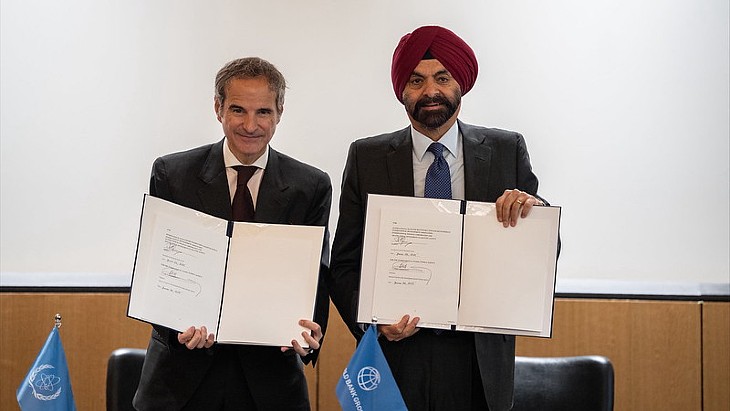The most experienced newcomer to nuclear power
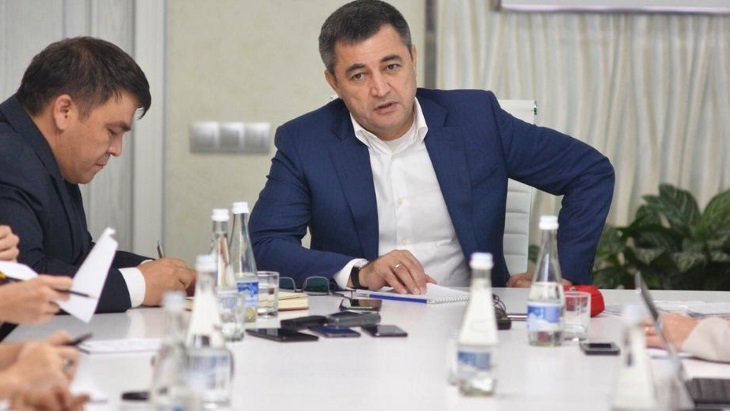
"As our president has said, Uzbekistan is 10-15 years late in having a nuclear power plant. In fact, our archive material confirms that the matter was first brought up as long ago as the 1970s, during Soviet times," Energy Minister Alisher Sultanov said. Sultanov and his deputy ministers spoke to a group of foreign journalists invited to Tashkent on 20-21 September to learn about the government's energy sector reform.
"The decision to build a nuclear power plant was not made overnight," Sultanov said, but reached after 18 months of deliberation by a specially appointed task force. "We know this is a sensitive matter but globally most power sector professionals understand that nuclear is green energy."
Although Uzbekistan's economy is relatively closed, it has been growing thanks to vast resources of oil, natural gas and gold. The government's 2019–21 Reform Agenda, developed with World Bank support and adopted in January, aims to achieve greater economic, social and political openness and build a competitive and market-oriented economy. Economic growth accelerated to 5.1% in 2018, is projected to be 5.3% this year and to converge to about 6% by 2021.
Despite its existing expertise in nuclear energy, Uzbekistan depends almost entirely on fossil fuels. About 86% of its electricity comes from burning gas, coal and oil, while the remainder comes from hydropower.
Alongside its adoption of nuclear power, and with no less urgency, are plans to unbundle its electricity sector and to reduce its carbon footprint. These policies have the full support of the country's president, Shavkat Mirziyoyev, who has pushed for economic and social reform since being elected in December 2016. The country's energy ministry was established in February this year.
Why nuclear?
According to a report published in April by the United Nations Economic Commission for Europe (UNECE), 70% of Uzbekistan's electricity comes from gas, 14% from hydropower, 13% from coal and 3% from oil.
Already the most populous country in Central Asia, its population grew by 65% between 1991 and 2018. It generates 5 TWh less electricity than the 69 TWh it needs each year, and that gap is projected to widen to 53 TWh by 2030 when demand is expected to be 117 TWh. Two nuclear power units will add 21 TWh of power a year and by 2030 account for 18% of the electricity mix.
Although "economic feasibility", "strengthening independence" and the country's "technical capabilities" influenced the decision to adopt nuclear power, the electricity deficit was the main factor, First Deputy Energy Minister Jurabek Mirzamahmudov said. His brief includes all sources of energy, but he is also directly responsible for the nuclear power project as head of UzAtom, an agency created in July last year to manage the government's nuclear power programme.
"We studied all other options," he said, including doubling hydropower capacity to 1.7 GW, adding 5 GW of solar power and 1.5 GW of wind power, and installing new CCGT units, "and still there was a deficit". It was decided that a nuclear power plant is the most sustainable alternative and has the significant benefit of being low carbon, he said. "We were recently in France, where last year 72% of its electricity was produced by nuclear and hydropower. As a result, its CO2 emissions were negligible."
Uzbekistan is one of the most energy-intensive economies in the world - 35% higher than neighbouring Kazakhstan and three times that of Germany, according to the World Bank. Its greenhouse gas emissions in 2014 were 214.7 MtCO2e, or 0.44% of the global total. The energy sector accounted for 89.4% of that figure. Its CO2 emissions that year were 105,213.56 mt. The country ratified the Paris Agreement on climate change in September last year and aims to reduce its CO2 emissions by 10% per unit of GDP by 2030 compared with the 2010 level.
Uzbekenergo, the 100% state-owned vertically integrated power utility, has the support of the European Bank for Reconstruction and Development (EBRD) in developing a low-carbon road map for the country's electricity sector.
"Uzbekistan doesn't have a lot to brag about when it comes to CO2 emissions," Sultanov said, but is "working hard" with the World Bank, the EBRD and the Asian Development Bank (ADB) in relation to the Paris Agreement. "We understand where our weak spots are and know that our gas transport system is a major source of CO2 emissions because we are using out-dated compressors based on ship and aircraft engines. We want to replace them with new engines that utilise maglev [magnetic levitation] technologies."
The government aims to increase the share of renewable energy - from hydropower, solar PV and wind - to 25% of its electricity mix by 2030. UNECE estimates the potential of solar energy and wind power in Uzbekistan to be, respectively, 50,973 Mtoe and 2.2 Mtoe.
With 250 sunny days a year, the country's solar PV potential is clear but, as with nuclear, it is "dozens of years late" to the market, Sultanov said. But this delay means it can "learn from the mistakes of other countries that set high tariffs for green energy" and is entering the renewable energy market at a time when technologies have matured to the extent that there are now "well-established procedures" for both construction and selection of contractors, he said. The government had offers of 10 cents per kWh, which was too high, he said.
"The new mechanism that we're implementing with the support of the World Bank is not to negotiate contracts with individual companies, but to put contracts out to tender and the resulting tariff is the only criteria that defines a contract's award," he said, adding that the bank had used this approach in some regions of Africa and produced offers of 2-2.5 cents/kWh of solar PV. "But given that Uzbekistan has huge untapped potential for renewable energy, we'll pursue localisation of equipment production," he said.
The low-carbon attribute of nuclear power is clear, Mirzamahmudov said. A single 1.2 GW nuclear power unit will each year avoid the emission of 7 million tonnes of CO2 and 18,000 tonnes of nitrogen dioxide that the country would otherwise have produced using fossil fuels, Mirzamahmudov said. Those figures can be quadrupled because the country plans to construct up to four reactors. The use of nuclear energy for electricity generation will free up natural gas for other uses, such as by the petrochemicals industry. As many as 7 billion cubic metres of gas would be saved by having four nuclear units, he said.
New-build project
Uzbekistan and Russia signed an intergovernmental agreement on cooperation in the use of nuclear energy for peaceful purposes in December 2017, and in September 2018 a further agreement was signed for the construction by Russian state nuclear corporation Rosatom of two VVER-1200 reactors. The engineering, procurement and construction (EPC) contract is expected to be signed with Rosatom subsidiary Atomstroyexport by the end of this year; a site licence to be granted in 2020; first concrete to be poured in 2022; and the two units to be commissioned in 2028 and 2030, respectively. In May this year, Rosatom and UzAtom signed a contract to perform engineering surveys for the planned units, and in July Sultanov announced the country wants to build four units and not just two as previously stated.
Sultanov attended the IAEA's 63rd General Conference in Vienna last month where the decision to add two more units was welcomed by the agency's leadership "because there are certain principles that the construction of a nuclear power plant is based upon", the energy minister said.
"The ultimate principle is safety, but one of the main factors that underlines a decision to go for nuclear power is energy efficiency and profitability, and we all understand that the second two units will cost much less than the first two because we will have all the required infrastructure and support already in place," he said. "And we all understand that nuclear power plant construction is not only about developing the power sector, but that it leads to parallel rapid development of all other sectors, including healthcare, agriculture and construction."
Although Uzbekistan will consider private investment in all of its other energy sectors, it sees a nuclear power plant as a national asset and thus it will be 100% state-owned, Mirzamahmudov said, adding the project will be financed by commercial bank loans backed by state guarantees. It will be similar therefore to Rosatom's projects with Bangladesh, Belarus, Egypt, Hungary and Iran - where the completed units are passed over to the owner-operator after fulfilment of acceptance tests - and not the build-own-operate model Rosatom has with Turkey.
UzAtom and Rosatom have started drafting the loan agreement, but the percentage of Russian financing is subject to the terms being worked out for the EPC contract, he said, adding that, although the cost of the project will not be publicly announced, it will be a "commercial deal in the national interest".
The first two units will be of the same, Generation 3+ VVER-1200, design as the ones being built in those countries, for which the reference plant is Novovoronezh II in Russia. The design of the second pair of units has not been decided yet, but Mirzamahmudov said UzAtom will study the progress of Rosatom’s Generation IV - VVER-Toi - design, which is under construction at the Kursk nuclear power plant, also in Russia.
Uzbekistan has chosen Russian technology for its first nuclear power plant because it took just six months to complete an intergovernmental agreement, while agreements with reactor vendors from France, Japan or the USA, for example, would have taken more than three years, Mirzamahmudov said. It is also important for the safe operation of the plant that Russia and Uzbekistan already share legislative and regulatory norms, in addition to a common language. Political questions, such as European Union sanctions against Russia, are not a concern, he said, noting that the Russian-built Bushehr nuclear power plant in Iran was outside US sanctions. There is the understanding, he said, that a nuclear power programme is a long-term commitment that outlives political changes, and that the nuclear energy industry is an inclusive club, he added.
"We're working with IAEA and other countries because the nuclear community is very close, very supportive of each other because it's understood that any issue with one can affect the whole industry. And such cooperation brings better understanding, better relations and, above all, safety. A nuclear power plant includes 10 years of project implementation, 60 years of operation, 20 years of extended operation, and then decommissioning. It's like a marriage for 100 years!"
Wider ambition
At the IAEA's General Conference, Sultanov described the four pillars of Uzbekistan's nuclear power strategy to 2021: constructing its first nuclear power plant; building capacity for the use of nuclear technology and science in the country's universities; reducing incidences of cancer among its people by improving radiation therapy in oncology and radiology centres; and using Uzbekistan's Institute of Nuclear Physics (INP) to optimise nuclear safety and performance. These demonstrate, he said, "Uzbekistan's comprehensive strategic commitment to nuclear technology and achieving the civilian benefits that nuclear technology brings."
He added: "The country's indigenous uranium resources make nuclear power an obvious choice for the country, in particular because it will provide cheap and sustainable electricity for many decades to come."
According to the IAEA, Uzbekistan is in seventh place in the world by uranium reserves and fifth by its production. The explored and estimated uranium reserves amount to 185,800 tU, of which 138,800 tU are uranium of sandstone-type and 47,000 tU are of blackshale type. The monopoly uranium producer in the country, Navoy Mining and Metallurgy Combine, plans to increase annual uranium production to more than 3000 tU in 2020.
Recent progress includes the partnership agreement signed last month between Uzbekistan's State Committee for Geology and Mineral Resources (GoscomGeo) and France's Orano. They are particularly interested in the Navoy region, a desert area at the heart of the uranium-rich province of Kyzylkum, where they plan to conduct borehole drilling works to improve the classification of resources already identified by GoscomGeo, and discover new uranium resources. Work is to start in the first-half of 2020.
Asked about the country's potential to cover the whole nuclear fuel cycle, Sultanov stressed that it had no intention to develop uranium enrichment capability. Uzbekistan does not possess nuclear weapons, has been a state party to the Nuclear Non-proliferation Treaty since 1992 and ratified the Additional Protocol in 1998. At the 48th Session of the UN General Assembly in 1993, the previous Uzbek president, the late Islam Karimov, formally proposed the Central Asian Nuclear-Weapon-Free-Zone treaty. Kazakhstan, Kyrgyzstan, Tajikistan, Turkmenistan and Uzbekistan signed the treaty in 2006 and Uzbekistan ratified it the following year.
"Uzbekistan was one of the champions of nuclear non-proliferation action in the UN and we supported a moratorium on proliferation of materials and weapons in this region," he said. "And Uzbekistan has made certain commitments before the IAEA and international community not to engage in uranium enrichment. Nuclear fuel production is a very big process and it starts with enrichment, but as for the last stage, the production of fuel rods themselves which happens after enrichment, we are discussing with partners the options for establishing that part of the fuel cycle in Uzbekistan."
Regarding the power plant project, he said, "We already have a confirmed contract for first loading of nuclear fuel and in the spirit of the earlier declared transparent and competitive selection ideology we will be buying fuel wherever it is cheaper and better. It can be from whomever."
Uzbekistan had two operational nuclear research reactors. The first, the 10MW VVR-SM at the INP, which is in Ulugbek, near Tashkent, was closed down in July 2016 with its decommissioning expected to begin shortly afterwards, but in February 2017 it was decided instead to upgrade and restart it in July the same year. Mirzamahmudov said it is currently operating as normal. The country's Academy of Sciences is in talks with Russian and German companies on a project to purchase a new cyclotron for the INP, he said.
The VVR-SM operated on 90% highly-enriched uranium fuel (HEU) from 1979 until August 1998, when it was converted to 36% HEU under a Russian programme to eliminate the use of 90% HEU in Soviet-supplied reactors abroad. In 2008, the reactor was converted to use low-enriched uranium fuel (19.7%). After seven transfers of HEU from the facility to Russia, in November 2012 the US National Nuclear Security Administration announced that the INP facility had been completely cleared of HEU.
JSV Foton owned and operated the second research reactor, a 20KWt (static) pulse reactor, which it used to test the radiation resistance of electronics. In cooperation with the IAEA and the US Department of Energy, the entire site of the reactor was decommissioned and is now a greenfield site, he said.
Preparations
Uzbekistan's president signed a law on the use of nuclear energy for peaceful purposes on 9 September, but legislative and regulatory preparations for the new-build project started more than a year ago.
Six months after UzAtom was created by presidential decree, the government established a regulatory body for nuclear and radiation safety - the State Committee for Industrial Safety (SCIS) - with the assistance of the IAEA and Russia's regulator, Rostechnadzor. SCIS has six members of staff which will be increased to 85, Mirzamahmudov said.
UzAtom is closely following the IAEA Milestones Approach for the development of its nuclear power programme. In February, at the request of the Uzbek government, the IAEA and UzAtom held a workshop in Tashkent on safety and non-safety aspects to be considered in site evaluation for nuclear power plants, and in April UzAtom sent an official request to the IAEA to conduct an Integrated Nuclear Infrastructure Review mission and Site and External Events Design Review Service mission. Mirzamahmudov said these are expected to take place in the second or third quarter of next year.
Between August 2018 and March this year, engineering and survey work was carried out at four sites in the Navoy and Bukhara regions in the vicinity of the Tudakul reservoir, and three sites in the Jizzakh region, near Lake Tuzkan. In May, a contract was signed with Atomstroyexport to conduct an engineering survey by the end of this year at the priority site - near Lake Aydarkul. By the end of 2020, an environmental impact assessment will be prepared and presented at public hearings.
Lake Aydarkul is an artificial body of water created in 1969 in the north-east of the country that is expected to become the largest lake in Uzbekistan within a century. Its source is the Syr Darya River.
The site is "very rare in the world", Mirzamahmudov said, because it has only one of the 15 "unfavourable factors" outlined by the IAEA in its criteria for a nuclear power plant. This factor - groundwater at a distance of 6-12 metres from the surface - "can be easily solved through engineering", he said.
Uzbekistan is "currently working hard" to join the Vienna Convention on Civil Responsibility for Nuclear Damage, he said, and aims to complete preparations for this by the end of 2020.
Public acceptance
UzAtom has also been working on public acceptance of the project, and in May opened the Atomic Technology Information Centre (IATC) in Tashkent together with Rosatom.
At the Centre's launch, Rosatom Director General Alexey Likhachov said, "We are convinced that the formation and development of nuclear infrastructure in any country should be supported by the majority of society."
Mirzamahmudov said opinion surveys showed the project in Uzbekistan already has that majority - nearly 80% of the national population.
"Nuclear power is safe," he said. "I recently visited Framatome’s fuel assembly fabrication site and was a very short distance from uranium fuel pellets. The reading on the radiation dosimeter I was carrying was zero." He added: "Our information centre explains to the public how a nuclear power plant is operated and the safety measures that are taken. It also explains that nuclear energy is not only about electricity, but includes healthcare and agriculture."
Nuclear power also needs to be explained as being part of the solution to climate change, along with renewable energy, he said. "Whenever we're asked, 'Why nuclear and not all solar?' we explain that nuclear power generates all the time, while solar energy depends on daytime hours." The costs of solar and wind energy are falling, but Uzbekistan "can’t afford the kind of tariffs Germany pays" for renewable energy, he said.
"We will have solar power, but we have to look at the feasibility, at the market, and increase tariffs slowly. And we need to address the environmental issues because our analysis shows that all the processes of nuclear power emit 12 grams of CO2 per kilowatt hour of electricity it produces. It's much higher for solar panels and wind turbines, which consume other resources that emit CO2. In addition, solar panels use heavy metals which are much more environmentally hazardous than nuclear waste. If you were to collect all the spent nuclear fuel from the 450 reactors around the world and put it into one place, it would fill one big football stadium and not more.
"Finally, you just have to look at the countries with a nuclear industry, such as Japan, South Korea, France, the USA, and now China, and see the level of their development. France is a good example, he added, of how a national nuclear industry contributes to society - with a 220,000 skilled workforce, it is the third biggest after the aeronautics and automobile industries and contributes EUR1.3 billion in direct state taxes."
About 100 young Uzbek nuclear energy professionals are studying at the Moscow Engineering Physics Institute (MEPhI), which last month established a college in Tashkent, where an additional 100 students have already been enrolled. MEPhI Tashkent offers free tuition in exchange for a commitment to work for five years at UzAtom or at the Nuclear Physics Institute of the Uzbek Academy of Sciences.
"Competition for admissions was fierce and only 6.7 people out of every 100 were admitted," Sultanov said. "The young people who want to study there understand that the government is investing in their education."
Mirzamahmudov said up to 8000 workers will be needed for the construction work and another 2500 will be needed to operate the plant after its launch. The percentage of the local workforce involved in the project will be agreed in the EPC contract, he said.
Regional connections
The training of nuclear professionals in Uzbekistan extends to cooperation with its neighbour Kazakhstan, Sultanov said. A delegation from Kazatomprom visited UzAtom and the IATC in August, and the two countries are now preparing a Memorandum of Understanding on exchanging information on nuclear energy. Kazakhstan has also shown interest in training its nuclear specialists at MEPhI Tashkent, he added.
The world's biggest uranium producer, Kazakhstan has itself long debated having nuclear power. Its BN-350 sodium-cooled fast reactor, near Aktau, ceased generating in June 1999 after 26 years of operation, and was decommissioned in 2001. During his meeting in Moscow with Kazakhstan's new president, Qasym-Zhomart Toqaev, in April this year, Russian President Vladimir Putin proposed Russian help to build a nuclear power plant. Magzum Mirzagaliev, Kazakhstan's deputy energy minister, later said there was no concrete decision on such a project, but that a potential site had been chosen near the town of Ulken, in the south-eastern Almaty Province.
The media trip to Tashkent included attendance of the first 'energy ministers' dialogue' organised by Central Asia Regional Economic Cooperation (CAREC). There, energy ministers from across the region signed a declaration to collaborate on meeting the United Nations' seventh Sustainable Development Goal, which pledges 'affordable and clean energy' by 2030.
Alongside this event, Uzbekistan signed a 10-year electricity supply agreement with Afghanistan. The contract was one of the conditions proposed by the ADB for financing construction of a new Surkhan-to-Pul-i-Khumri power line. Afghanistan and Uzbekistan are providing USD105 million and USD45 million, respectively, towards the USD150 million project.
Sultanov said such regional cooperation was long overdue. "Afghanistan is an obvious partner because they are our neighbour, we have a border with them," he said. "But we are interested in developing the whole region."
A double-landlocked country located in the middle of the region, Uzbekistan wants to turn its geographic disadvantage into an economic advantage by restructuring the way it trades energy with its four neighbours. In March, a presidential decree on electricity market reform provides for the unbundling, privatisation and attraction of foreign investment to the Uzbek electricity sector. Uzbekenergo has since been replaced by three newly established joint-stock companies.
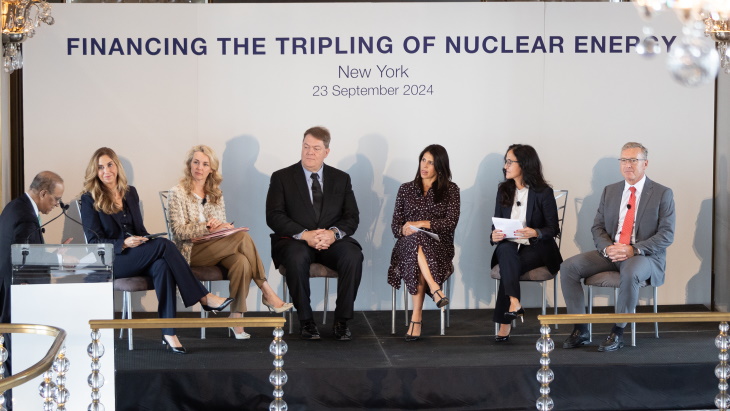
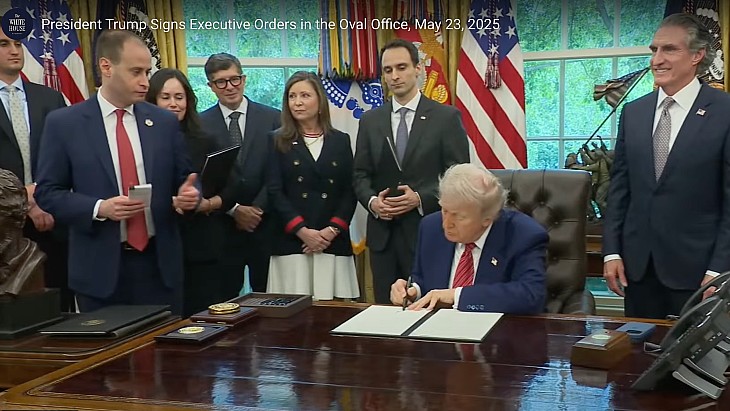
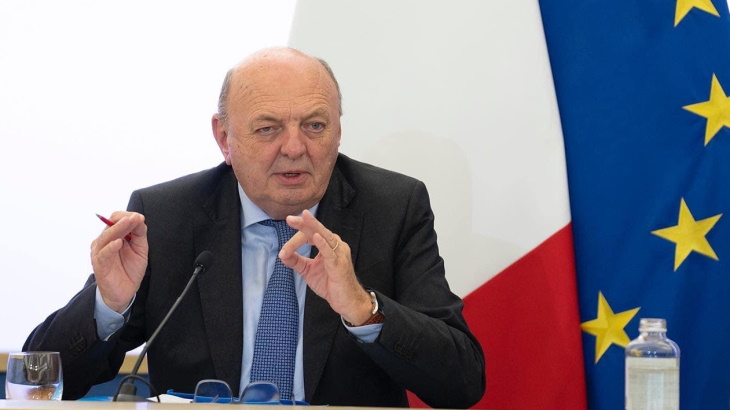
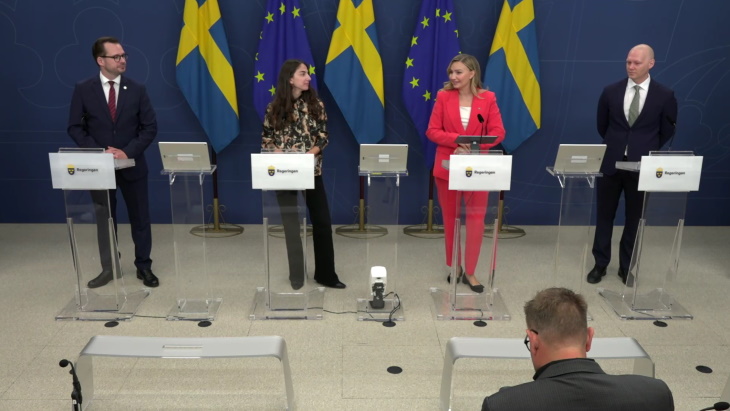





..._58412.jpg)
